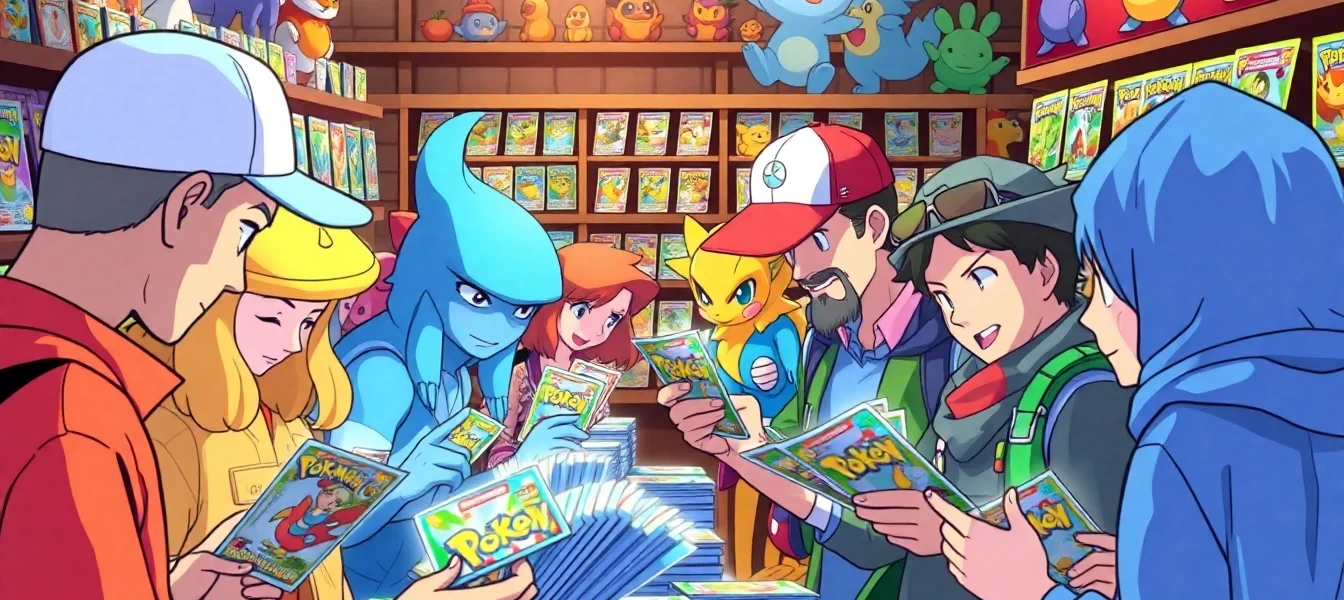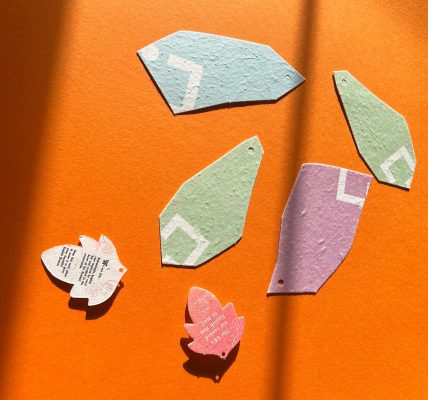Understanding Real Pokémon Cards
In the world of collectible trading cards, real Pokémon cards hold a special place for avid collectors and fans alike. These cards are not mere cardboard pieces; they represent nostalgia, strategy, and investment potential for millions around the globe. To appreciate and participate in this vibrant community, it’s vital to understand what makes Pokémon cards authentic. Whether you are a newcomer or a seasoned collector, recognizing the qualities and characteristics of real Pokémon cards is essential.
What Are Real Pokémon Cards?
Real Pokémon cards are officially licensed trading cards produced by The Pokémon Company and its partners. They are part of the Pokémon Trading Card Game (TCG), which has been captivating audiences since its inception in 1996. Authentic Pokémon cards come in various types, including basic, stage, and trainer cards, each contributing uniquely to gameplay. The cards often feature popular Pokémon from the franchises, complete with illustrations that vary in style from set to set. The significance of these cards extends beyond their gameplay value; they often carry nostalgic associations and can appreciate significantly over time.
Key Features of Authentic Pokémon Cards
To ensure you are purchasing genuine Pokémon cards, pay attention to several key features that distinguish them from counterfeit counterparts:
- Quality of Material: Real Pokémon cards are made from high-quality cardstock with a specific thickness and texture that gives them a distinct feel. They should not feel excessively flimsy or overly rigid.
- Print Quality: Authentic Pokémon cards will have crisp, vibrant artwork with well-defined edges. Blurry images or subpar printing are telltale signs of imitation cards.
- Identifying Markings: Each card features a unique identification number and set symbol, essential for collectors seeking to complete their sets accurately. The placement and font of these markings should be consistent across all authentic cards.
- Holographic Features: Many Pokémon cards have holographic elements that shimmer and change colors when viewed from different angles. This optical illusion is a sophisticated printing technique not easily replicated by counterfeiters.
- The “Blue Core”: Real Pokémon cards feature a blue core layer visible when the card is lighted correctly, while counterfeit cards often lack this feature.
Common Myths About Pokémon Cards
Several misconceptions regarding Pokémon cards can mislead collectors and new players alike:
- Myth: All Old Cards Are Valuable: While vintage cards may hold substantial value, not every old card is a collector’s item. Price heavily depends on the card’s rarity, condition, and demand in the marketplace.
- Myth: Condition Doesn’t Matter: The condition of a card plays a crucial role in determining its value. Cards classified as ‘mint condition’ will fetch higher prices than those with visible wear and tear.
- Myth: You Can Tell a Fake Card by the Feel: While the texture can hint at authenticity, counterfeiters continually improve their products. Therefore, other verification methods should be employed.
Identifying Fake Pokémon Cards
With the immense popularity of Pokémon cards, the market has unfortunately seen an influx of fake cards. Recognizing these counterfeits is key to ensuring a worthwhile collection. Here’s how to identify them effectively.
How to Spot Counterfeit Real Pokémon Cards
Identifying a fake Pokémon card requires close examination and attention to detail. Here are some techniques to utilize:
- Observe the Color: Fake cards often have a color that is either too vibrant or too dull compared to their original counterparts, which can give away their authenticity.
- Light Test: Authentic Pokémon cards have a particular blue core. When held against bright light, real cards will exhibit a slight translucence, revealing the layered construction within.
- Weight Test: High-quality materials used in real cards lend them a specific weight. If a card feels unusually light or heavy, it may be a counterfeit.
- Corner Rounding: Use a magnifying glass to inspect the corners of a card. Genuine Pokémon cards have slightly rounded corners, while counterfeit versions may have sharper edges.
Top Signs Your Pokémon Card is Fake
Beyond the initial identification methods, some specific signs point to counterfeit cards. Look for:
- Thickness Discrepancies: Fake cards may be noticeably thicker or thinner than authentic cards.
- Foil Quality: In holographic cards, the foil should exhibit a shimmering pattern. Fakes often lack this depth and instead present a flat shine.
- Errors in Text: Typos or misspellings are strong indicators of a fake card. Authentic Pokémon cards undergo thorough scrutiny before release, making them virtually free from such mistakes.
Tools and Resources for Verification
To assist in the authentication process, several tools and resources are available:
- Magnifying Glass: Essential for inspecting prints, corner rounding, and text details.
- Light Source: Use a bright LED flashlight to check the core and color accuracy of cards.
- Comparison Samples: Keep examples of authentic cards from each set for side-by-side comparison with suspected fakes.
- Community Forums: Engage with collectors on platforms like Reddit and other TCG communities to gain insights and tips about specific cards or sets.
Where to Buy Real Pokémon Cards
Knowing where to purchase real Pokémon cards is crucial for building an authentic collection. Here are reliable options to explore.
Best Online Retailers for Authentic Cards
Several reputable online platforms specialize in selling real Pokémon cards. Here are some top recommendations:
- Pokémon Center Official Site: This is the primary source for new Pokémon TCG products, ensuring authenticity and a wide selection.
- Cardmarket: Europe’s largest marketplace for buying and selling Pokémon cards, offering a vast array of options from various sellers.
- Omnific Games: Particularly popular in India, they provide a wide range of Pokémon cards along with related accessories.
Local Stores That Sell Real Pokémon Cards
In addition to online shopping, consider patronizing local game stores or hobby shops, which often stock Pokémon cards:
- Game Shops: Many dedicated gaming stores carry TCG products and may provide incentives for frequent buyers.
- Comic Book Shops: These retailers frequently stock Pokémon cards and can be wonderful places to find rare or older cards.
- Sports Card Stores: Some specialize in trading card games and offer both new releases and vintage selections, giving you diverse purchasing options.
Online Marketplaces and Safety Tips
While online marketplaces like eBay and Amazon can offer valuable card options, there are safety considerations when purchasing:
- Check Seller Ratings: Always review seller feedback to ensure trustworthiness. Look for experienced sellers with a high volume of transactions.
- Review Return Policies: Be aware of return and refund policies for each marketplace to protect against counterfeit purchases.
- Examine Product Images: Multiple clear images should be provided for prospective purchases, enabling you to examine details thoroughly.
Pricing and Valuation of Pokémon Cards
The value of Pokémon cards can vary widely based on several factors, making it essential for collectors to learn how to determine pricing accurately.
How to Determine the Value of Real Pokémon Cards
To gauge the value of a Pokémon card, consider the following steps:
- Check Online Price Guides: Websites like TCGPlayer and Beckett provide pricing charts based on actual selling prices in different conditions.
- Compare Recent Sales: Review recent auction results on platforms like eBay for real-time pricing trends.
- Consult Professional Grading Services: Services such as PSA or Beckett grading can provide valuable insights into card valuation based on condition and rarity.
Factors Influencing Pokémon Card Prices
Numerous elements contribute to the fluctuating prices of Pokémon cards:
- Card Rarity: Limited edition cards or those from older sets generally fetch higher prices.
- Card Condition: The grading system evaluates the card’s state—better grades can result in significantly increased values.
- Popularity: The demand for specific Pokémon characters can drive prices. Cards featuring popular or powerful Pokémon often sell for higher amounts.
Investment Tips for Collectors
Investing in Pokémon cards can be lucrative if done wisely. Here are some actionable tips for novice and seasoned investors alike:
- Diversify Your Collection: Collecting a mix of different card types, ages, and rarities can help spread risk.
- Stay Informed: Follow market trends through collector forums and price tracking websites to make informed purchasing decisions.
- Protect Your Investment: Store cards properly in sleeves and hard cases to maintain their condition over time. Consider environmental factors, such as humidity and temperature, as detrimental to their integrity.
Community and Culture of Pokémon Collecting
The Pokémon card collection community is dynamic and diverse, with various ways to participate. Understanding this culture gives collectors an added dimension to their hobby.
The Role of Online Communities in Card Collecting
Online communities play a vital part in the Pokémon card culture, allowing enthusiasts to connect beyond geographical constraints:
- Forums and Subreddits: Platforms like Reddit’s r/PokemonTCG offer users an opportunity to share insights, trade cards, and discuss strategies.
- Social Media Groups: Facebook and Discord have groups dedicated to Pokémon TCG where users can exchange advice and sell or trade cards safely.
- Content Creation: Many collectors run YouTube channels or blogs, sharing deck strategies and collection updates, which can also help demystify the market.
Events and Conventions for Pokémon Fans
Participating in events fosters a sense of community and offers additional avenues for purchasing and trading cards:
- Local Tournaments: Weekly tournaments at local game shops present excellent opportunities for networking and trading.
- Conventions: Events like Comic-Con or regional conventions often feature Pokémon-related booths where collectors can find cards and merchandise.
- Online Virtual Events: Many organizations now host virtual tournaments and card trade shows, making it easy to connect with people worldwide.
Sharing Your Collection: Best Practices
Displaying a Pokémon card collection can be rewarding, providing an opportunity to showcase your passion for the hobby. Here are a few best practices:
- Use Protective Sleeves: Always protect valuable cards with high-quality sleeves or cases.
- Organize by Sets: Arrange cards according to their series and types to impress fellow collectors.
- Share Online: Engage with the community by showcasing your collection through social media or dedicated collector forums.




